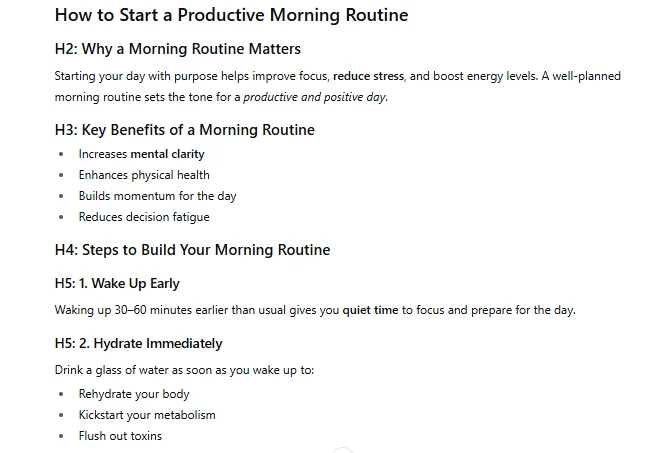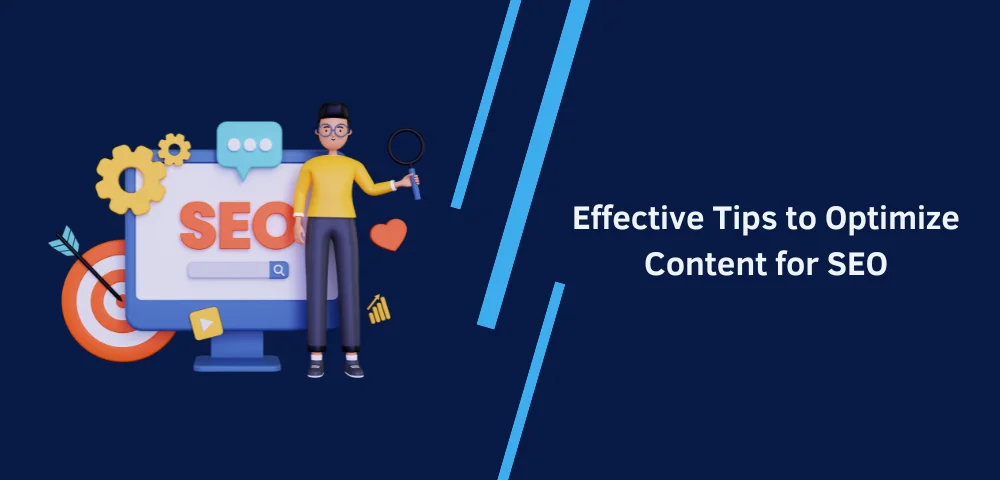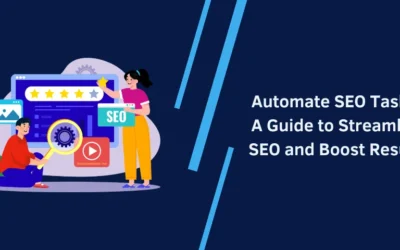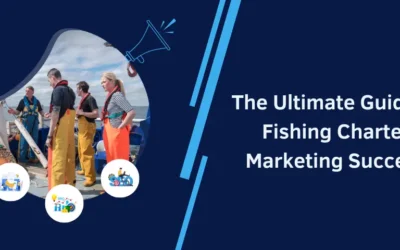As we all know that the competition is very high on the internet because of the overwhelming number of websites and content pieces. According to an online source, there are about 7.5 million blogs published on the internet per day. As a result, we can find multiple blogs written on the same topic.
In this condition, just writing content is not enough to get your desired results. You need to implement SEO techniques to gain a competitive edge and increase the chances of your content getting ranked.
However, you might not know how to properly optimize your content for SEO. Don’t worry! In this comprehensive guide, we have explained some effective SEO tips and tricks to help you optimize content.
Importance of Optimizing Your Content for SEO
SEO (Search Engine Optimization) involves different techniques to make content search engine-friendly. SEO Optimizing your content plays a vital role in:
- Enhancing user experience.
- Driving the right audience that is relevant to your business, blog, etc.
- Establishing credibility and trust.
- Increasing engagement and conversions.
- Staying one step ahead of the competitors.
5 Effective Tips to Optimize Your Content for SEO
In the sections below of the post, we chose five effective SEO tips that could enhance your content’s position in the SERPs as well as improve user experience.
1. Optimize Your Content Using LSI Keywords
Don’t rely on using primary keywords solely in your content; it’s not enough. For better SEO, your content needs to contain LSI or semantic keywords as well. These are terms that are contextually related to your primary keywords. They play a direct role in improving the relevancy of your content to a particular query.
The table below shows some examples of LSI keywords:
| Primary Keyword | LSI or Semantic Keywords |
| “grow e-commerce store” | “scale your online store”, “boost eCommerce revenue”, “increase online sales”, “grow digital storefront”, “optimize e-commerce performance”, “build a successful online business”. |
| “content writing tools” | “blog writing assistant”, “AI content generator”, “grammar checker”, “sentence rephrasing tool”, “improve writing clarity”, “content optimization software” |
| “social media marketing” | “social media strategy”, “digital marketing tips”, “online brand promotion”, “grow your social presence”, “improve social media engagement”, “build brand awareness online” |
There are multiple keyword research tools that you can use to find LSI keywords; some popular among them are Ahrefs Keyword Generator, Google’s Keywords Planner, Keywords Everywhere, etc. After keyword research, follow the tips below to use them.
Tips to Use LSI Keywords:
- While adding semantic keywords, you should make sure that they fit in the original context.
- You should naturally adjust them throughout your content; at the start, middle, and end.
- Don’t use the same keywords consecutively; this will make your content repetitive and boring for readers.
- The density of LSI keywords should be lower compared to the focus keyword.
- You should avoid using keywords excessively, as it will result in keyword stuffing that negatively affects the SEO of your content.
2. Ensure SEO Structure of the Content
SEO friendly content structure and formatting will make it easier to scan and understand for both readers and search engines.
Tricks to Structure Content for SEO:
Here are some helpful tricks to make your content structure SEO-friendly;
- You should add relevant headings as well as subheadings in your content, following the sequence of H1, >H2, >H3,…, >H6.
- Break the larger blocks of text and paragraphs using bullet points and number lists.
- Another beneficial tip is to bold or italicise some important phrases in your content.
- You should prefer shorter sentences and paragraphs.
For Example:

3. Add Images and Optimize Them
Adding images or infographics to your content can improve its readability as well as user engagement. This is because they break the blocks of continuous text pieces and make complex data simple to understand.
One thing that you should keep in mind is that the images are only useful for your content when they are optimized for SEO as well.
For instance, if your images are large and take a longer time to load, they will likely slow down the overall speed of your website.
So, another effective SEO tip here for you is to optimize your images.
Here Are Some Helpful Tips to Optimize Images:
- Add Alt Tags: Write alt text for each image in your content. This will help search engines to understand what your images are about. Writing a natural alt tag and including a relevant keyword is a better SEO practice. For example, Alt-Text: “Team using AI tools to improve productivity”.
- Optimize Your Image File Name: If your images have generic names such as “IMG_4567.jpg” or “photo_20230807.png”, you should replace them with descriptive names. The best practice here to follow is to name your image files with relevant keywords, like “digital-marketing-guide.jpg” or “content-strategy.png”, etc.
- Reduce Image Size: Another helpful tip here is to reduce/decrease the size of your images without harming the overall quality. For this, you can use online tools like Compressor, TinyPNG, or Compressnow.
- Write Captions: You should add captions as well. This will further improve user experience and provide additional context for your content’s images.
4. Make Your Content Simple and Engaging to Read
Search engines such as Google recommend helpful content that is easier to read and understand, as well as engaging. So for SEO optimization, you should ensure that your writing is:
- Clear to read and understand for your audience.
- Free of jargon and complicated words.
- Fluent and coherent to engage your readers.
- Clear of unnecessary information and redundancies.
However, this might feel difficult to you, especially when your content’s subject matter is complex. In this scenario, the efficient tip here for you is to utilize an AI paraphrasing tool. All you need to do is paste the sections of your content that have difficult wording or repetitive phrases into the tool and run it. It will understand your content first, and then rephrase it into a smooth, refined, and more engaging output.
5. Follow Google’s E-E-A-T Guidelines
Google prioritizes content that follows E-E-A-T practices. E-E-A-T is an acronym that stands for:
- E– Experience.
- E– Expertise.
- A– Authoritativeness.
- T– Trustworthiness.
Using EEAT, Google evaluates content’s quality and credibility, especially when it’s about a topic that could have an impact on finance, health, or other important values.
To optimize your content for SEO, it should follow E-E-A-T guidelines. Let’s explore further:
- Experience: Your content should show that its writer has first-hand experience with the topic. You can tell this via personal examples, reviews, or case studies.
- Expertise: Ensure that your content expresses that you (as a writer) have deep how know of the subject matter. For this, you should clearly state your qualifications and credentials. Deeply explore the topic, going beyond the surface level.
- Authoritativeness: In E-E-A-T, authoritativeness concerns to the authority and recognition of the content writer in the eyes of search engines. For better SEO, your content should demonstrate the status and recognition of its writer in the field. For this, you can add the Author bio, LinkedIn profile to present a strong presence.
- Trustworthiness: Your content should be transparent and accurate, matching the intent of users. Plus, we suggest including testimonials, reviews, social proof, etc., to show your content’s trustworthiness.
Conclusion
SEO optimization can help you improve content quality and boost its rankings in search results. In the preceding sections of this post, we mentioned several effective tips: adjusting keywords properly, ensuring an SEO-friendly structure, optimizing images, making content readable, and adhering to Google’s E-E-A-T guidelines. Implementing these SEO optimization tips in your content can make it friendly for both search engines and users.



